Connecting to Ancestors with AI
Michael Voskoboynik, Technology Coordinator, Hasten Hebrew Academy of Indianapolis
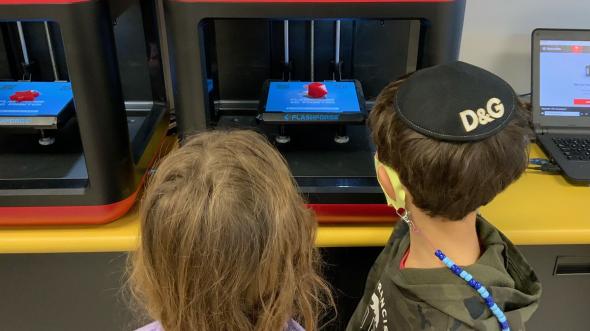
Michael Voskoboynik, Technology Coordinator, Hasten Hebrew Academy of Indianapolis
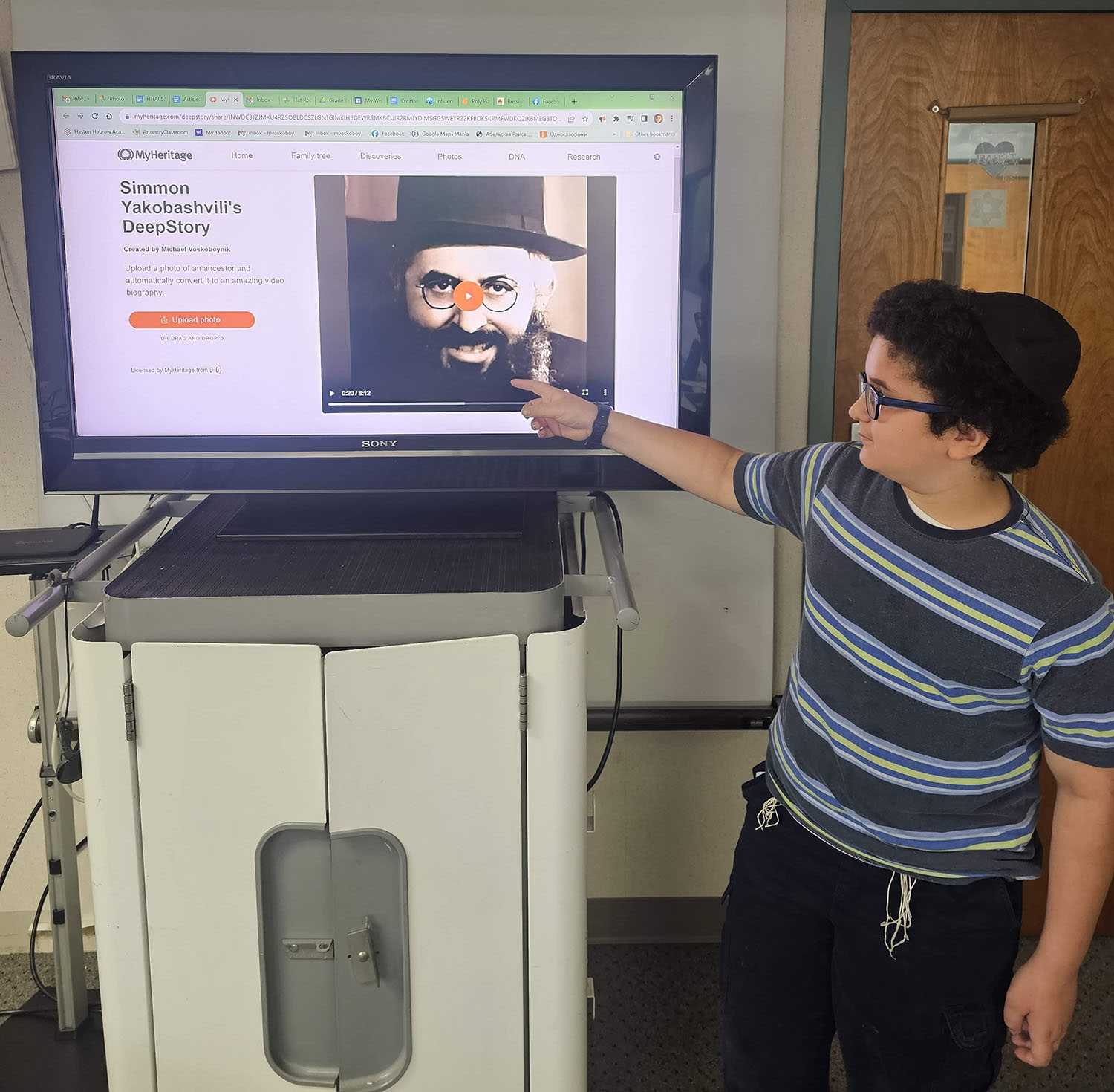
Our students regularly speak with their ancestors as well as long-gone heroes of Jewish history. At the Hasten Hebrew Academy, we embrace AI as a tool that connects students to their history while making humanities and Jewish history exciting.
For the past three years, our students and their families have worked collaboratively with Israeli peers in a program of the ANU – Museum of the Jewish People to bridge the gap between grandparents and their grandchildren. Students from both schools learn about their family origins by interviewing their family members and researching family artifacts.
An important part of this work is the use of the latest creative technology tools to make the final product interactive and engaging. Students created videos with Flip, traced their family origin with Google Earth, and depicted their family stories in VR with CoSpaces and Spatial.io. But when the “revolutionized” AI came along last year, they were able to add a cutting-edge dimension to this project.
Students found old family photos, often with parent and grandparent assistance, and used AI to enhance and colorize them and even add AI-generated backgrounds, making their great-grandparents feel more familiar and approachable.
These photos were then imported into MyHeritage AI Deep Story and Character AI, allowing students to speak to their ancestors! In order to make this work, students spoke with family members and researched to create detailed profiles of the individuals in the photos. This process helped strengthen generational family bonds as well as reinforcing the history the students are learning at school. Next, students needed to research the times during which their family members lived. This extensive information was then used to write scripts that their ancestors could access to answer modern-day questions. Students in essence brought their ancestors back to life, albeit virtually.
The AI tools helped students make this project a reality, but they also helped integrate knowledge and study skills from humanities, Judaic studies, music and so many other subjects. Students needed to use critical thinking to determine what information their ancestor would need to possess to be able to answer questions fully and seemingly independently. Presentation skills were of vital importance in the planning of the “interview” with their ancestor and then in explaining it to classmates, teachers, Israeli counterparts and attendees at the ISTE conference last summer.
This project provides students with meaningful connections with their families and those of their classmates and Israeli peers. While these presentations may take place over Zoom with the school in Israel, local parents join the students in their classroom, helping to explain family heirlooms and adding to what the students present. Their own family history is seen in light of everything they have learned in their other classes, and history becomes more personal and visceral.
Dr. Rachel Harari, Co-Head of the Elementary School, The SAM School, Manhattan

As an English language arts educator for the past 15 years, I have been forced to reconsider my goals for the classroom now that my students have access to AI, this powerful new tool. Here, I explore two critical goals for educators to consider when incorporating AI into their instruction.
Information is spread so quickly today through social media and other outlets. Students need to discern reliable sources from those that are misleading or biased. AI can be a useful tool for illustrating the importance of source verification and the dangers of misinformation.
I like to tell my students that nothing they read was ever published or accepted in its first draft. When we value the writing process over the final product, we mitigate a lot of the challenges AI presents by ensuring students value the development of their ideas and the ethical sourcing of information.
Incorporating AI into the classroom is an opportunity to rethink our goals and how we can equip students with critical digital literacy skills, reinforcing the value of the writing process and ethics.
Dr. Lee-Ron Kaye, Head of School, Associated Hebrew Schools of Toronto (AHS)
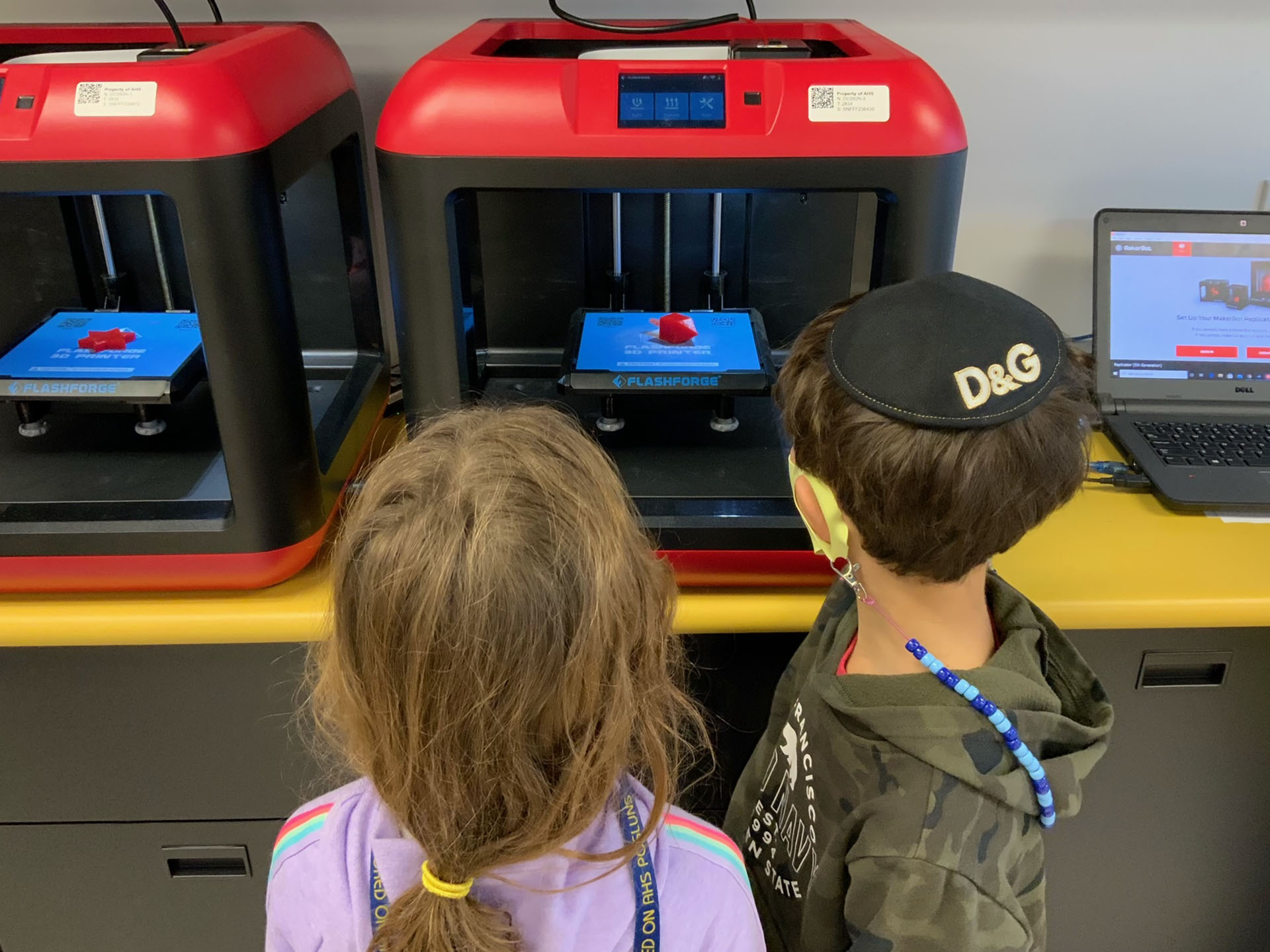
I am a strong proponent of STEAM education and believe that it is enhanced to its fullest potential when infused with Judaic content. STEAM is an educational philosophy that values contextualized and relevant projects empowering students to develop many academic and 21st century skills. These skills are timeless and transferable to any context or application, like communication, collaboration, time management, problem-solving, creativity and self-evaluation.
STEAM learning can be used as a springboard to engage with Jewish concepts. When STEAM first emerged on the landscape, it was referred to as STEM. The “A” was later added to incorporate Arts, and in the way we have adopted it into our curriculum, I propose calling it “STREAM,” the R in reference to religion. STREAM education is the means through which we innovate tradition and traditionalize innovation; these learning opportunities allow our students to connect with their Jewish roots and heritage in relevant and meaningful ways. STREAM learning allows us to bring Judaic concepts into the 21st century.
When thinking about what lies ahead on the STREAM horizon, it is clear that advancements in AI will have a strong impact. With platforms capable of producing comprehensive texts with just a few keystrokes, many educators are wary of the challenge this presents for assessment. I look at this not as a challenge, and instead as an opportunity. We are presented with the opportunity to teach students about integrity and to leverage these tools in a transparent and effective manner to serve their needs, goals and interests. Another opportunity we have is to traditionalize this innovation by putting the “AI” in Judaism; we can creatively consider how to leverage these technologies to support the Jewish community and create a bright Jewish future.
This is an inquiry I engaged in with participants in a Wexner Fellowship Institute, and our teachers during a professional development session. Participants were challenged to come up with a concept for a new AI app that makes Judaism more accessible, strengthening individuals’ connections with Judaism or Jewish people’s connections with each other. Examples that groups came up with included an app that scans the local grocery stores for the best deal on kosher ingredients, and then uses this data to compile a grocery list and create recipes for a Shabbat or holiday menu based on preferences and parameters the user could set. Another idea was for an app that cross-references the contacts in an individual’s social media networks with obituaries to provide people with timely updates about losses in their community.
We look forward to launching this STREAM challenge as a cross-curricular, project-based learning opportunity for our middle school students, and incorporating lessons on how to code and program an app. Whatever the outcome, the purpose of this challenge is to encourage participants to adopt a future-focused mindset, exercise their creativity and embrace innovation while remaining anchored by core Jewish values.
Phreddy Nosanwisch, Teacher, Hillel Day School of Metropolitan Detroit
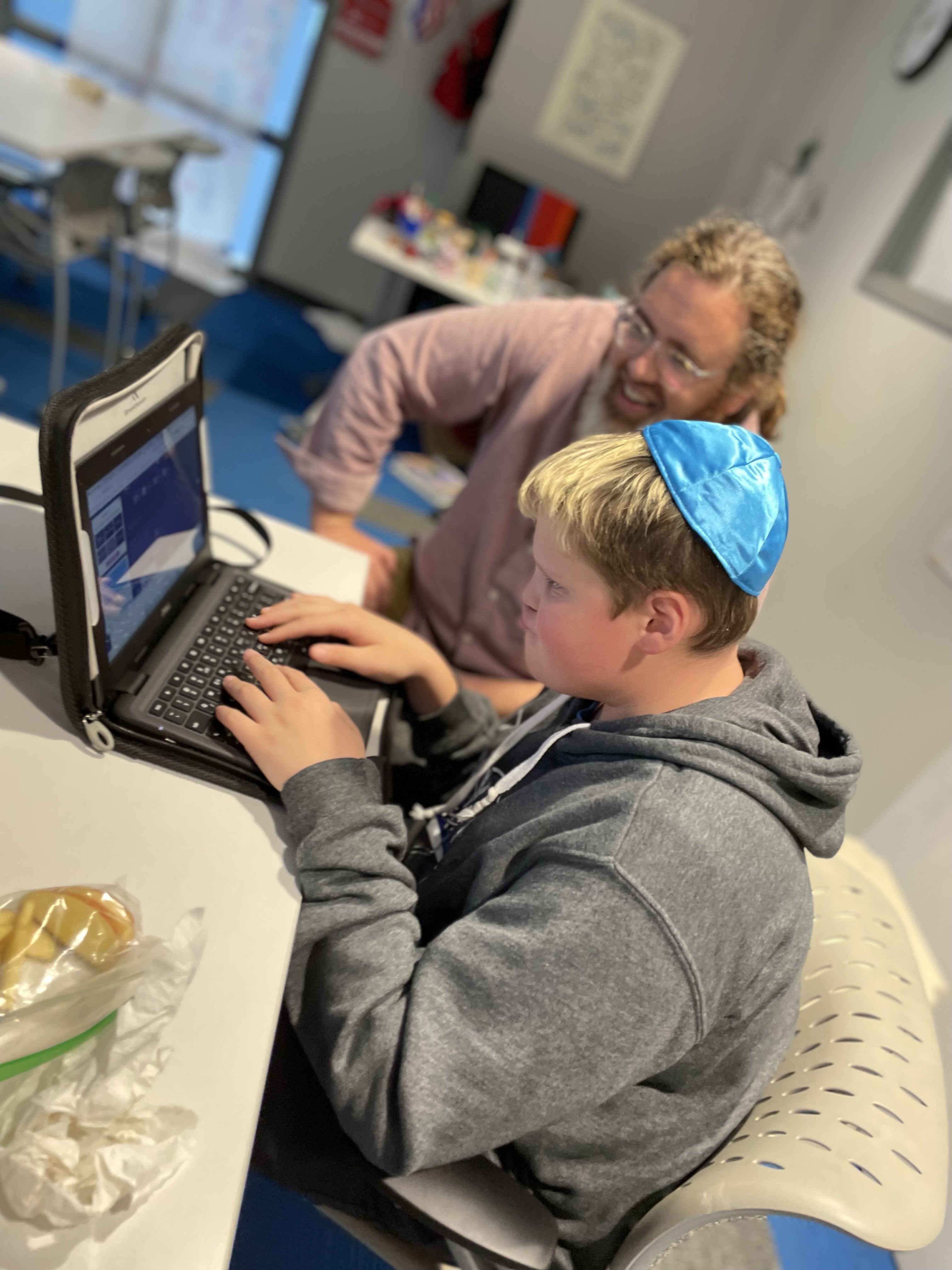
Though 400 years old, the story feels like it could have been written today: the spread of rumor, “fake news” and misinformation rouse a mob to attack a vulnerable minority whose only hope for survival is the closeness of their community and a bit of novel technology—in this case a golem, a clay giant brought to life by the Rabbi Yehudah Loew of Prague.
I teach a unit on H. Leivick’s Yiddish dramatic poem, The Golem, as part of our seventh grade class on Jewish literature and mysticism. We begin the unit by defining and identifying sentience, and then asking whether deep-language learning AI models (computer programs that can “talk” to/with humans) can be considered sentient. These discussions serve as the basis of our inquiry about and empathy for the play’s tragic hero, Yosef, the golem.
Although I planned this unit before the 2022-23 school year started, the month or so that we spent studying the text strangely coincided with inflammatory tweets by Ye and Kyrie Irving, and the release of ChatGPT 3. Each day as we read aloud around the table, there were more and more moments for us to connect situations in the story with the events in the news. Even more importantly, The Golem enabled the students to unpack how they felt about those news stories as young people and as Jews.
As I was pondering how to conclude our study of the play and build a container for all the diverse and nuanced opinions and feelings that arose as a result, my partner wryly challenged me: “The only way to finish this thing is to make a golem.”
So I took her advice and typed into ChatGPT: “Write a play based on H. Leivick’s The Golem about a digital golem designed to protect the Jews from antisemitism online.” What it produced was truly remarkable. Written in three short acts, it told the story of an algorithm that erased anti-Semitic hate speech anywhere it popped up online but soon ran afoul of free speech advocates. It concluded with the programmers pledging to find a middle road, where different groups collaborated to take down hate speech and educate about the dangers of hate rather than relying on a nonhuman algorithm.
The next day in class, I invited the students to write a prompt of their own and watch ChatGPT compose a second version. In this version, the “golem” was really a group of friends who banded together to engage trolls directly and help change their hearts and minds about their hateful beliefs. It was a beautiful, heart-warming story but it made glaringly obvious the one thing ChatGPT didn’t seem to know: what makes being Jewish so magical.
Neither story did or could say that fluffy challah eaten by candlelight is what makes it special, or singing ancient words set to new melodies surrounded by friends is what makes it special, or debating Israeli politics with your opinionated cousin, or making chamin, because each of those feelings/memories/experiences/delights is unique to me or you.
And I’m glad that ChatGPT didn’t try to write that in; trying to make a blanket statement about what is magical for all Jews is its own form of stereotyping.
In the play, what makes Yosef such a complicated figure is that despite the singular purpose for which he was created, he has feelings and desires of his own. He is sentient because he is particular. And ChatGPT isn’t. ChatGPT’s power is that it collects and synthesizes so much information that it can’t completely be idiosyncratic or passionate, sentient or particular.
And so the students took the material that ChatGPT generated and brought it to life with their idiosyncrasies, their passions and their particularities. They each edited one of the plays, allowing them to talk directly to Kyrie Irving (whom they admire) and share their lives and hearts with him, and to tell internet trolls and each other what being Jewish means to them.
Shterny Dadon, College Head of Jewish Life (ELC- 12), Masada College, Sydney, Australia
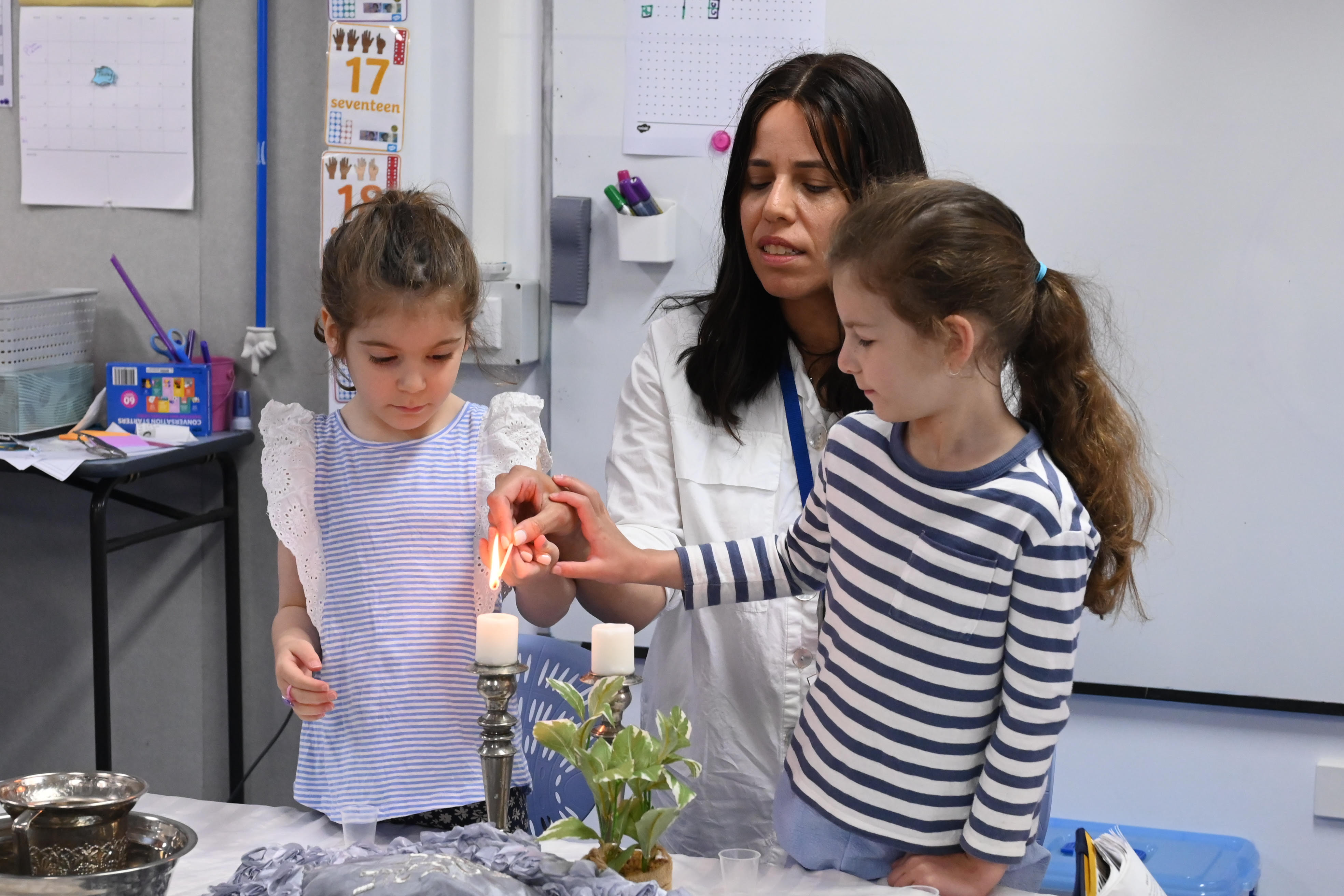
Tech is in my family’s DNA. My zaidy was forever glued to his video camera. My paternal grandfather purchased one of the first refrigerators in Jerusalem, and my dad’s preschool even had a field trip to witness this miraculous invention.
Me? In ninth grade I had internet access before anyone else. I even convinced my computer teacher to take my class on an adventure to my house to witness the modem’s magical dial-up connection. I was also the first one in my class to have a cellphone, but there was just one problem: I had no one to call!
As an educator with more than two decades of experience, I’ve always been an advocate for integrating new technologies into the classroom. Recently, I discovered an AI tool called ChatGPT that had been making waves across various fields. Intrigued by its potential, I embarked on an experiment to see how AI and design thinking principles could revolutionise my lesson planning.
My goal was to motivate and encourage the students to peel back the layers of interpretation, delve into the intricacies of characters, moral dilemmas and societal dynamics within various texts from the Tanakh. My ultimate goal was to leverage AI to deepen students’ connection to the text-based study of the Tanakh and to enable the biblical characters and themes to resonate in the context of the 21st century.
The class began by encouraging the students to approach the text with empathy, aiming to understand the characters’ perspectives and experiences. As they analysed the text, verse by verse, in both Hebrew and English, they recorded their observations on sticky notes, generating a wide range of ideas and questions. These notes were then organised into clusters based on similarity, forming the five overarching themes.
Students were then divided into groups, each assigned a theme to explore. This included delving into a central question, researching modern-day quotes, finding connections in other Tanakh passages, and formulating additional questions for exploration. The results were presented to the class, fostering collaborative learning, creative and critical thinking skills.
I utilised AI to assist in summarising the text, extracting and categorising the five key themes from a selected portion of text and formulating one discussion question for each theme. AI didn’t replace traditional text-based learning; rather, it served as a powerful tool to spark curiosity and appreciation for the richness and relevance of biblical texts.
In an era where students grapple with profound questions of identity, the significance of Judaism, and the study of ancient texts in a rapidly changing world, continuous innovation is paramount. AI can also help bridge the gap between ancient wisdom and modern understanding, unlocking the treasure trove of knowledge within texts like the Tanakh. In turn, this experience cultivates student curiosity and engagement, fostering an immersive classroom learning experience.
As we journey into the future of educational technology, let’s remember that it’s not about the tool itself, but how we use it to augment our teaching and harness it as a valuable resource.